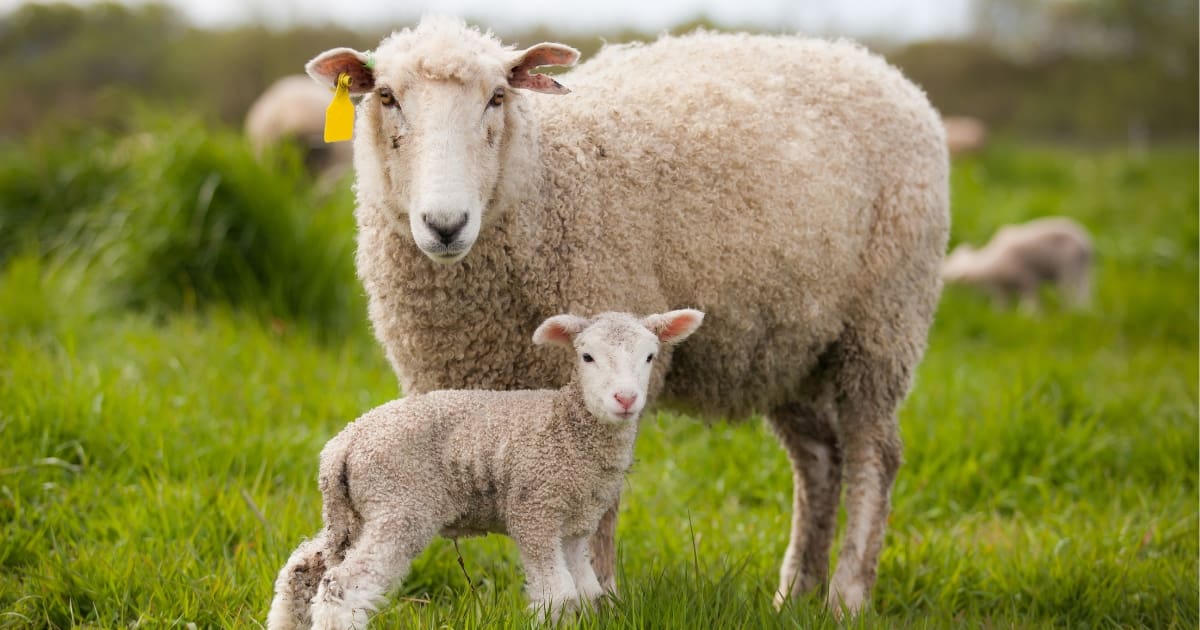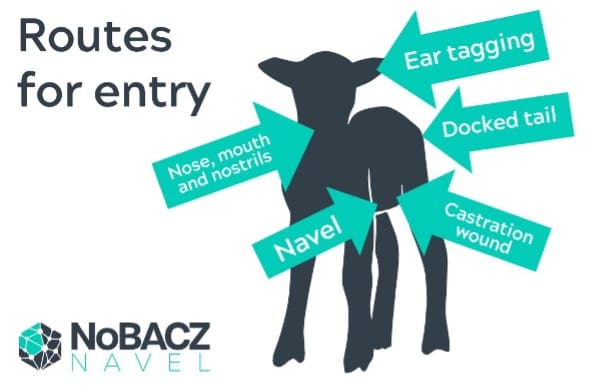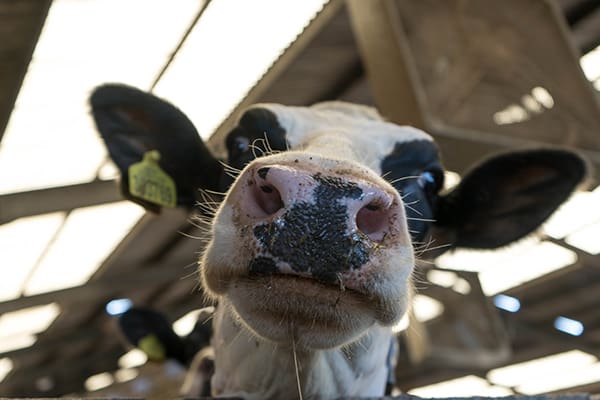

Navel Care – How to Avoid Infection in Lambs
Hygiene is a critical aspect of successful lambing seasons. There are numerous procedures during both birth and the post-partum period that can serve as entry points for bacteria leading to infections. The most common bacterial infection is with Streptococcus dysgalactiae, and it has been identified in up to two thirds of cases of joint ill. While the first thought of prevention often goes to navel care, it is important to remember that bacteria is often transmitted from carrier ewes, and this can cause problems with joint ill not just from birth but also at a later date such as tail docking.
This blog aims to shed light on the common issue of navel ill, its causes, and effective prevention strategies. To learn more on how to prevent joint ill on your farm, feel free to access Flock Health’s Lamb health and hygiene training here:

Did you know?
Did you know that navel ill, often caused by the bacteria Streptococcus dysgalactiae, is not always associated with dirty lambing sheds? Surprisingly, this bacterium can survive on clean straw as well as being carried on equipment and personnel. And as prevalence of joint ill on farms can be alarmingly high, reaching up to 20-50%, with mortality rates of affected lambs as high as 20% in some instances, it is vitally important to take preventative measures to reduce spread.
The best approaches to lamb hygiene are targeted and specific and pay attention to preventing bacterial infection from as many of the recognised routes as possible. Lambs are at particular risk of bacterial infection during the following events:
- Navel dipping
- Ear tagging
- Castration
- Docking
We also know that Strep Dysgalactiae can be carried on equipment (e.g. rings, tags, tubes, bottles and feeders) and stock people too as well as surviving on the straw. While good hygiene is always important, navel prevention plans should have a particular focus on hygiene of the equipment, the environment and the stockperson at these crucial times.
Minimise bacterial entry during procedures like navel dipping, ear tagging, castration, and docking. Focus on equipment and environmental hygiene, as bacteria can survive on equipment and even on stock people.
Antimicrobial considerations
Established practices exist to try and prevent infection, such as navel dipping, as well as use of both preventative antibiotic in at risk lamb groups and therapeutic antibiotic once a navel infection has been detected. Following the NSA policy position on responsible antimicrobial use in sheep and concerns of growing antimicrobial resistance there is now greater importance on non-antibiotic control measures. These include adequate colostrum intake and high lamb hygiene standards such as navel dipping. The recommended treatment protocol for treatment of navel and/or joint ill is a 7 day course of antibiotics, so prevention of infection is highly advantageous. Not only does this contribute to the risk of antimicrobial resistance but also carries economic implications. Planning hygiene and prevention procedures that are less reliant on antibiotics and avoid bacterial translocation should be a priority for farmers.
How NoBACZ Navel can help
The goal of using topical products to reduce infection is to prevent as much ascending infection as possible. The ideal product for lamb hygiene would be one which can be used to treat all sites – navels, ear tags and tails/testicles as well as the kit itself such as the tags and rings.
Navel treatment is a key consideration. Any product applied must dry the navel as quickly as possible. Traditionally strong iodine has been the product of choice for navel dipping. It is effective thanks to its high alcohol content providing good desiccation and additional levels of disinfection from the iodine.
- A key feature of good navel products is a rapid dry time. NoBACZ Navel has been developed specifically to offer a rapid dry time.
- It’s easier to achieve good coverage of navels when dipping, if you’re spraying make sure you spray from all angles to get a good colour indicating thorough coverage.
- Best practice for navel care is to dip twice – or choose a long-lasting navel care solution like NoBACZ Navel.
- Ear tagging is another key time to prevent ascending infection -it’s recommended to dip or spray ear tags and the ear itself.
- Do you spray your tails and rings before docking? It’s an opportunity for bacteria to enter the lamb leading to potential joint ill.
NoBACZ Navel offers an alternative purpose-built solution for navels, ears and ring sites. It also has a high concentration of alcohol, similar to iodine, which cleanses the site. It also has a unique secondary action. It coats the navel during drying with a protective and long-lasting coating that is water resistant and impermeable.
We recommend using NoBACZ Navel on the navel, after birth, but also on the ears when ear tagging and on tails before docking.
Choose products that treat all sites – navels, ear tags, tails/testicles, and equipment.
NoBACZ Navel offers a purpose-built solution, providing a protective coating during drying and incorporating metal salts for antibiotic-free infection control.
As we strive to reduce antibiotic resistance and preserve their benefits for severe cases, planning hygiene and prevention procedures becomes paramount. By adopting targeted and specific approaches, we can minimise the risk of bacterial translocation and ensure a healthy lambing season. Explore the options available, such as NoBACZ Navel, and implement best practices for optimal results.
Remember to head over to Flock Health’s Lamb health and hygiene training video for more information.
Find out more about NoBACZ and our products here…


